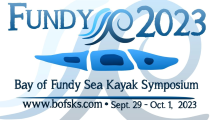Step 1 – Assess your skill level based on the descriptions below …
Please use the following descriptions and criteria to place yourself into one of the three categories. Self-assessment is important to you, to us and to other participants. As a participant, it helps ensure that you’re learning at the most appropriate level. When a class is too challenging or not challenging enough, effective learning is greatly reduced. Self-assessment helps us manage risk and allows participants to learn and perform at a reasonably equal level.
Self-assess yourself into the category that bests describes your paddling experience and competence. You do not have to meet every criteria of the category, but should meet many of them
If you have difficulty self assessing yourself, please consult a paddling partner or coach for advice. You can also ask Dwight Welch email her at signup@bofsks.com
| Paddling skills | Some formal instruction; can paddle forward with efficiency, steer their kayak, move sideways and prevent capsize effectively in flat water |
| Rescues | Can perform self rescue and peer rescue in flat water |
| Rolls | No roll required |
| Practical limits | Paddle 6-8 miles in a protected coastal or inland environment in a day |
| Paddling skills | Can perform all of the desired skills of an advanced beginner efficiently and effectively; can paddle backwards and maintain a course in wind and current; understands paddling theories such as trip planning, navigation and equipment. |
| Rescues | Proficient with deep water rescues and towing techniques |
| Rolls | Roll in flat water and scull for support |
| Practical limits | Can perform in winds up to 15kt, moving water up to 3kt and swells up to 6ft; can paddle 8-15 miles in a day |
| Paddling skills | Has a variety of experience in the cockpit in lumpy and moving water; has good group awareness and some leadership experience; assesses personal risk accurately and can travel well in a group of led paddlers |
| Rescues | Proficient with deep water rescues and towing techniques in advanced conditions |
| Rolls | A reliable roll in lumpy and moving water |
| Practical limits | Can perform all the fundamental skills and deep-water rescues in wind up to 20kt, moving water up to 4kt; in good physical condition and can paddle 15-20 miles in a day |
Definition of the sessions being offered at the Symposium
